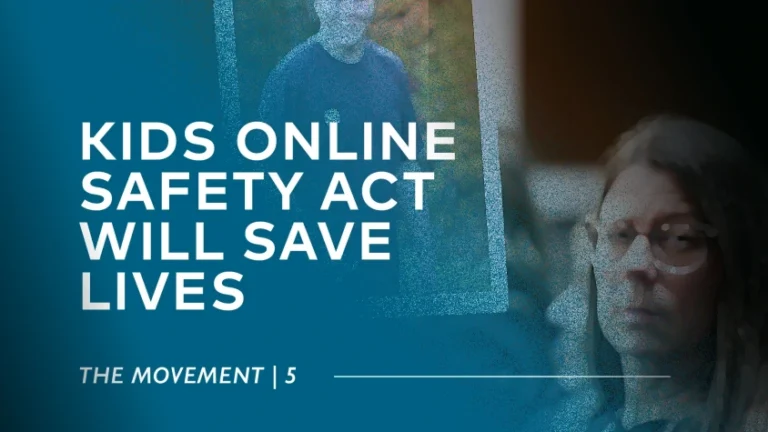Guest Post courtesy of Strength To Fight—a Canadian-based group
dedicated to addressing the harms of pornography.
Across the Western world, politicians, health professionals, and the public are beginning to wake up to the reality that pandemic pornography use is doing enormous damage to the fabric of society.
Marriages are collapsing under the weight of compulsive porn use, attitudes towards sexuality are changing due to nonstop consumption of violent sexual material, and children are being exposed to hardcore porn at a younger and younger age. For years, a growing group of scholars has been raising the alarm on the social costs of easy access to pornography. Now, governments are beginning to wake up and realize that the proliferation of hardcore porn is a plague that must be addressed.
It is of no small significance that the Canadian House of Commons, with support from the Conservative Party, the governing Liberal Party, and the New Democratic Party unanimously passed Motion 47 on December 8, 2016.
Already Motion 47 has resulted it a national dialogue on pornography on television and within the pages of Canada’s most esteemed newspapers. Those of us who have been watching the progress of the porn crisis are now very hopeful that essential voices on the dangers of pornography will be heard, and that the government can begin to take legislative action to curb porn use.
The motion was put forward by Member of Parliament Arnold Vierson, and reads as follows:
That the Standing Committee on Health be instructed to examine the public health effects of the ease of access and viewing of online violent and degrading sexually explicit material on children, women and men, recognizing and respecting the provincial and territorial jurisdictions in this regard, and that the said Committee report its findings to the House no later than July 2017.
The intent of this motion, according to Vierson, was to “require the Standing Committee on Health to conduct a study on violent pornography. The last major federal study on the impact of pornography was in 1985 before the Internet was invented. A study would allow for a broad spectrum of stakeholders to be involved in developing future policy on this important issue.”
The Committee has already begun to meet and examine the problem, and has already been hearing from three witnesses—Dr. Jacqueline Gahagan, Assistant Dean of the Faculty of Health Professions at Dalhousie University, Kathleen Hare, a doctoral student in the Department of Language and Literacy Education at the University of British Columbia, and Dr. Mary Anne Layden of the Sexual Trauma and Psychopathology Program at the University of Pennsylvania’s Department of Psychiatry. Dr. Mary Anne Layden in particular is considered an expert on the connections between sexual violence and porn use—her paper “Pornography and Violence: A New Look At Research” being one of the go-to resources for researchers.
In addition to the testimonies of the witnesses, the Committee has so far received twenty-three briefs to consider from a wide range of concerned stakeholders. Each organization or individual approached the porn problem from a different perspective, with one commonality: The evidence they presented was heartbreaking. Take for example, the Central Nova Women’s Resource Centre’s submission to the Committee. The Centre represents nine community-based women’s centres across Nova Scotia and comes at the problem from a feminist perspective, and they called for federal leadership on the issue, going so far as to state that it was a need:
We are pleased to hear that the Standing Committee on Health will soon undertake a study on the public health effects of sexually violent and degrading imagery online. This study is vital because pornography is easily available and portrays extreme and degrading violence against women, which perpetuates the notion that women are sexual objects and that men are entitled to treat women this way. Its ubiquitous nature has normalized hyper-sexualization and violence. Access to online pornography by youth has even more significant consequences. At a time when youth are seeking information about sex, they see violent and degrading images of women. Pornography has been linked to increased dating violence and self-destructive behaviour in youth; it is now being recognized as a public health hazard, and several jurisdictions are taking steps to limit youth access to online pornography.
Donna Kroocmo, Executive Director of Rainy River District Women’s Shelter of Hope, concurred with that analysis, describing in her own brief the wide range of damage pornography has caused. She described horrifying scenes of girls showing up in hospital emergency rooms with prolapsed rectums as the result of violent, porn-inspired anal sex, and noted that some of this physical damage was long-term. This problem is so severe, in Kroocmo’s opinion, that it was time Canada considered legislative remedies:
Remedies do exist. In Hawaii, restrictions were placed on the sale of pornographic material and rape figures fell. The restrictions were lifted, and rape increased. Scandanavia, Britain, Australia, and New Zealand found a connection between the availability of pornography and the level of rape. Between 1975 – 1992, in New South Wales, pornography became increasingly available and there was a 90.6% increase in rape cases.
In his brief, Paul Lavergne of Turning Point Counselling Services detailed the impact of pornography that he’s witnessed and dealt with first-hand:
Effects on individuals I have observed the following effects on those who have been repeatedly exposed to hardcore and violent porn:
- Self-hatred and loathing at their inability to control their behavior
- Arrest due to downloading child pornography
- Depression and despair due to increasing feelings of powerlessness
- The normalization of abuse and exploitation of others in a sexual context
- Reduced empathy for the suffering of others
- Increased obsession and preoccupation with viewing porn
- Job loss. Watching porn at work often leads to job loss, which in turn leads to financial hardship and marital stress
- Loss of productivity. I have had clients in recovery that have reported 20%-30% increase in income and productivity after stopping their porn viewing. People watching porn at work are costing our economy million of dollars a year in lost productivity, as well as potential sexual harassment law suits.
The reason for the sheer scale of this impact, of course, is due to the fundamentally addictive nature of pornography, which was described in exhaustive detail in a brief submitted to the Committee by Dr. Gary Wilson. Glendyne Gerrard, Director of Defend Dignity, described pornography as the root cause of most sexual exploitation. And Ernie Allen Former President & CEO, National Center for Missing & Exploited Children (US) and International Centre for Missing & Exploited Children, explained how pornography was creating a violent new sexual ideology in the youth:
A 2011 article from the journal Aggressive Behavior, “A survey of youth aged 10-15 found that youth who reported exposure to pornographic materials were 6.5 times more likely to report sexually aggressive behavior.”
The Standing Committee on Health has already met on February 7, March 23, April 4, and the final meeting is scheduled for April 6. The evidence they are hearing paints a grotesque picture, but it is encouraging to know that those responsible for drafting legislation to protect the youth are being presented with the truth about Internet pornography. Many of the briefs submitted to the Committee detailed various options for a legislative response to the proliferation of pornography, and with all major federal political parties supportive of the Committee’s work, it may be that the Canadian government will take action on this issue in the near future.
As part of the Canadian-based organization Strength To Fight, I have been part of the team of young men and women who have given over 100 presentations over the last two years from coast to coast. And from what we have seen in our high-schools, universities, teachers conferences and churches, we can only say that it won’t come a moment too soon.




